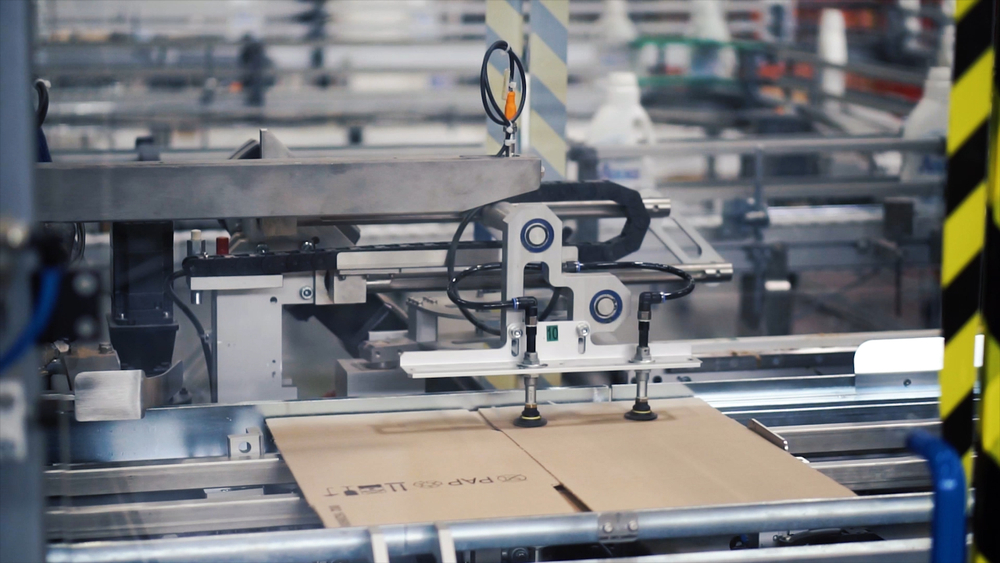Packaging and contract manufacturing: thinking outside the box
Outsourcing production or packaging needs can be tricky business. Understand the differences and which one better suits your needs

Tejas Shah

Your core business is manufacturing, and you are darn good at what you manufacture.
Unfortunately, customers also care about the packaging and end up buying your competitor’s products simply because they have better packaging. You simply don’t have the resources to source, stock, and also package your amazing products into attractive packaging to entice your customers.
This is when contract packaging can come to your rescue.
Tracking your packaging & contract manufacturing
Software that gives you the tools to create outsourced purchase orders and track raw material levels at contractors’ locations — stay in the loop with Katana Cloud Inventory.

What is contract packaging?
Contract packaging is when you hire a third-party company to provide packaging solutions for your products.
The third-party company, often referred to as the contract packager, provides either primary, secondary, tertiary or a combination of the packaging solutions for your products. With your packaging needs taken care of, you have more energy to focus on manufacturing.
What are all these different levels of packaging you might ask?
Let’s look at the pharmaceutical manufacturing space to understand these.
To keep things simple, let’s take Aspirin in its pill form. The product itself could be packaged in a blister packaging solution. This is called the primary packaging, and it protects your products. So, all those products in the annoying and hard-to-open clamshell packaging are essentially primary packaged products.
Going back to our blister packaged Aspirin, generally, it is further packaged in a larger box that is considered secondary packaging. Secondary packaging is usually where manufacturers request for custom packaging, and the packages also carry other information such as instructions, precautions, manufacturer’s info, and the like.
From there, multiple packs of secondary packaged Aspirin are put together into larger corrugated boxes called tertiary packages. Multiple boxes are then also put into shrink wrapping to make transportation easier. So tertiary packaging is done for ease of transport or as part of making different kits of products as well.
Now the example we saw was for one product and one size of packaging. However, consider:
- Multiple products
- Different packaging sizes and volumes
- Promotional or trial packs
- Gift packs
The complexity of packaging skyrockets with each additional factor.
For a business specializing in manufacturing, packaging can end up being a huge problem, and that is exactly where contract packagers enter the picture to provide solutions to complex packaging needs.
What is contract manufacturing?
Contract manufacturing (CM) is the process of outsourcing either a part or all of your manufacturing to an external company. This external company is then called your subcontractor.
In the CM workflow, the subcontractor takes care of the entire production cycle, right from sourcing the raw material to packaging and shipping the products to distributors and customers. This implies that you simply need to place an order for your products, and the subcontractor takes the rest.
Adopting a CM workflow can be quite a big transition if you have always manufactured your products yourself. However, there are plenty of reasons to use this CM route, such as increasing production and reducing labor costs.
A CM workflow also frees up a lot of energy and resources for you to focus on other important aspects of your business, such as product development and marketing. Of course, there are plenty of subtleties to consider before outsourcing your production to a third party.
Many companies use a CM model, which is highly prevalent in the food manufacturing industry. So it is highly likely that food products from competing brands are produced in the same manufacturing facility and using the same raw materials.

Contract packaging vs contract manufacturing
Now that we have defined each workflow, the difference between contract packaging and contract manufacturing clearly lies in what the third-party company handles.
Contract packaging is when a third-party company takes care of the packaging needs of already finished products. While a CM is when the third-party company handles the entire production cycle, including packaging needs.
Since packaging is only a part of the services that contract manufacturers offer.
They already have the infrastructure and capacity to handle the packaging needs of other companies as well. So, contract manufacturers often provide contract packaging services as well. This is the reason why CM and contract packaging go hand in hand and are often clubbed together as contract manufacturing and packaging companies.
That being said, plenty of companies specialize only in packaging and often specialize in specific industries as well. For instance, there are specialized pharmaceutical contract packaging companies or food contract packaging companies. Since these industries require special packaging equipment for regulatory reasons, like the blister packaging that we discussed earlier.
ERP for packaging and contract manufacturing
Katana Cloud Inventory software supports manufacturers who outsource all or some of their production to third-party businesses, giving users complete visibility of inventory levels and production line status.

Using software to manage contract manufacturing and packaging workflows efficiently
Once you understand which workflow suits your needs, the next step is to manage it efficiently. In both workflows, there are plenty of soft overheads, such as keeping track of your orders, products, invoices, and accounting.
Without the right tools, it can be quite overwhelming to get these processes working. Thankfully manufacturing ERP software can take care of many of these challenges.
For example, Katana’s contract manufacturing and live inventory management features help you track your products and inventory at your contract packager’s locations. ERP software often comes with features that allow you to create well-defined workflows and bill of materials (BOMs), allowing you to easily track your contract manufacturer’s services fees.
With the right tools like Katana, you can leverage the power of contract manufacturing and grow your business. Thousands of manufacturers have used Katana to strengthen their businesses. Get a demo.

Tejas Shah
Table of contents
Get inventory trends, news, and tips every month
Get visibility over your sales and stock
Wave goodbye to uncertainty with Katana Cloud Inventory — AI-powered for total inventory control